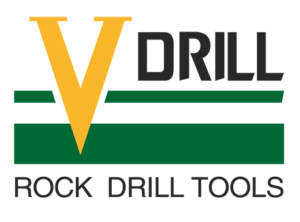DTH hammer, also called down the hole ( DTH) hammer, is a kind of pneumatic rock drilling tool, DTH hammer is an integral part of the DTH Rig. The difference from others is that during DTH drilling process, down the hole hammer always stays at the bottom of the hole, impacting the rock by bit from DTH hammer directly. The rotating power acting on DTH hammer comes from rotation motor on the drill rig, the pull force comes from feeding device and transfers the energy to DTH hammer through drill pipe; High-pressure air enters into the DTH hammer through DTH drill rods, then run out from DTH hammer bits, exhaust air is used to blow up cuttings from the bottom of the hole; The rapid hammering process shreds hard rock into small fragments and dust, they are then blown away by a fluid, be it air, water, or the drilling mud itself. DTH Drilling technique was created to drill big holes vertically in ground boring drilling and other industrial applications, such as metallurgy, coal, chemical industry, water conservancy, hydropower, highway, railroad, national defense, construction, and other engineering hole-forming operations. You should keep the following points in mind while choosing the right DTH hammer for your projects: 1. DTH Hammer Size:The selection of DTH hammer size is largely determined by the hole diameter and type of rock formation, 3.5 to 10 inches is the best range of blast holes for DTH drilling. Smaller holes are typically drilled with a top hammer rather than a DTH hammer, and larger holes generally use the rotary drilling technique; DTH rigs drill straight holes with less deviation providing more accurate blasting and better fragmentation as a result. the size of the DTH hammer should be selected as close as possible to the size of the hole to be drilled. The larger the diameter of the DTH hammer, the larger the diameter of the piston, and the higher the working efficiency. Ideally, the size of the hammer should match the required hole dimension as closely as possible, leaving just enough space for cuttings to evacuate the hole. Usually, the smallest hole diameter a DTH hammer can drill is its nominal size. i.e. standard 127 mm (5′) hammer will drill a hole down to a minimum diameter of 127 mm (5′). The limiting factor is the outside diameter of the DTH hammer, because as the hole diameter reduces

